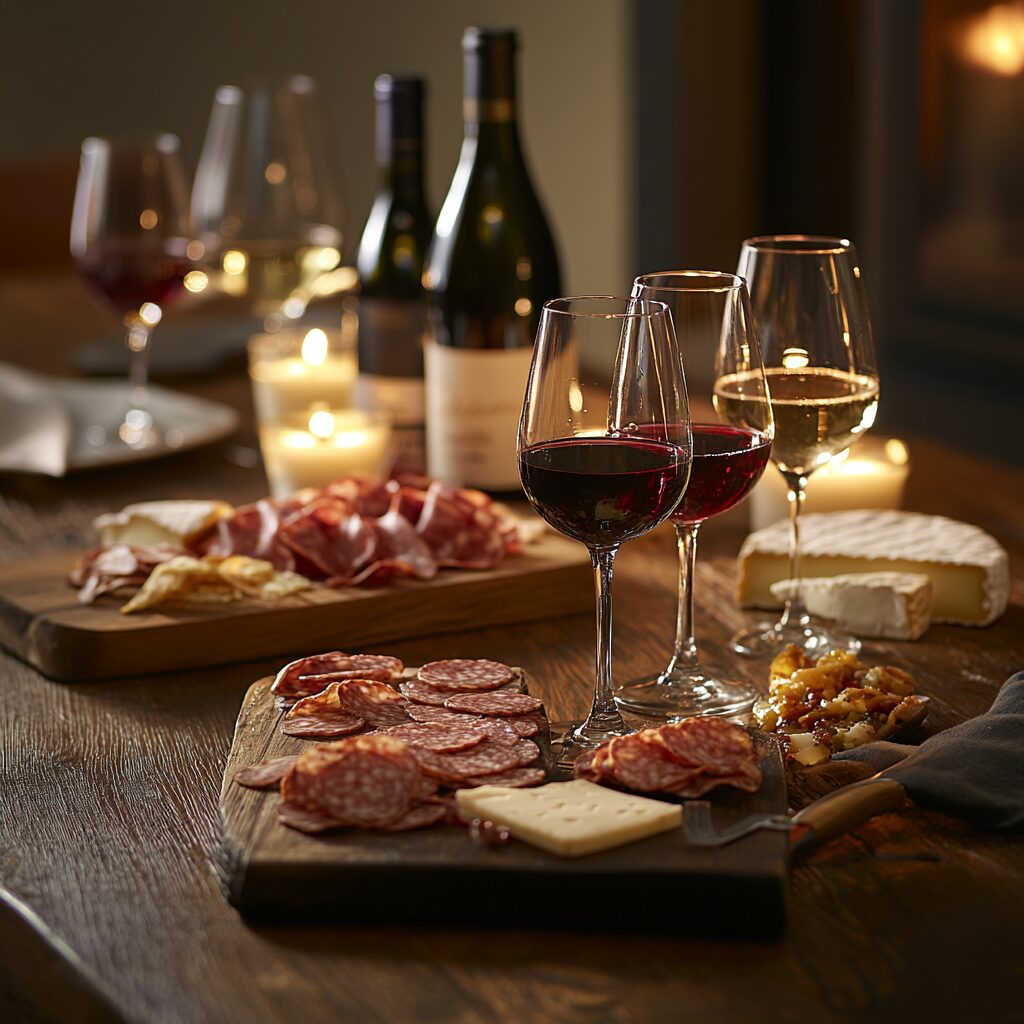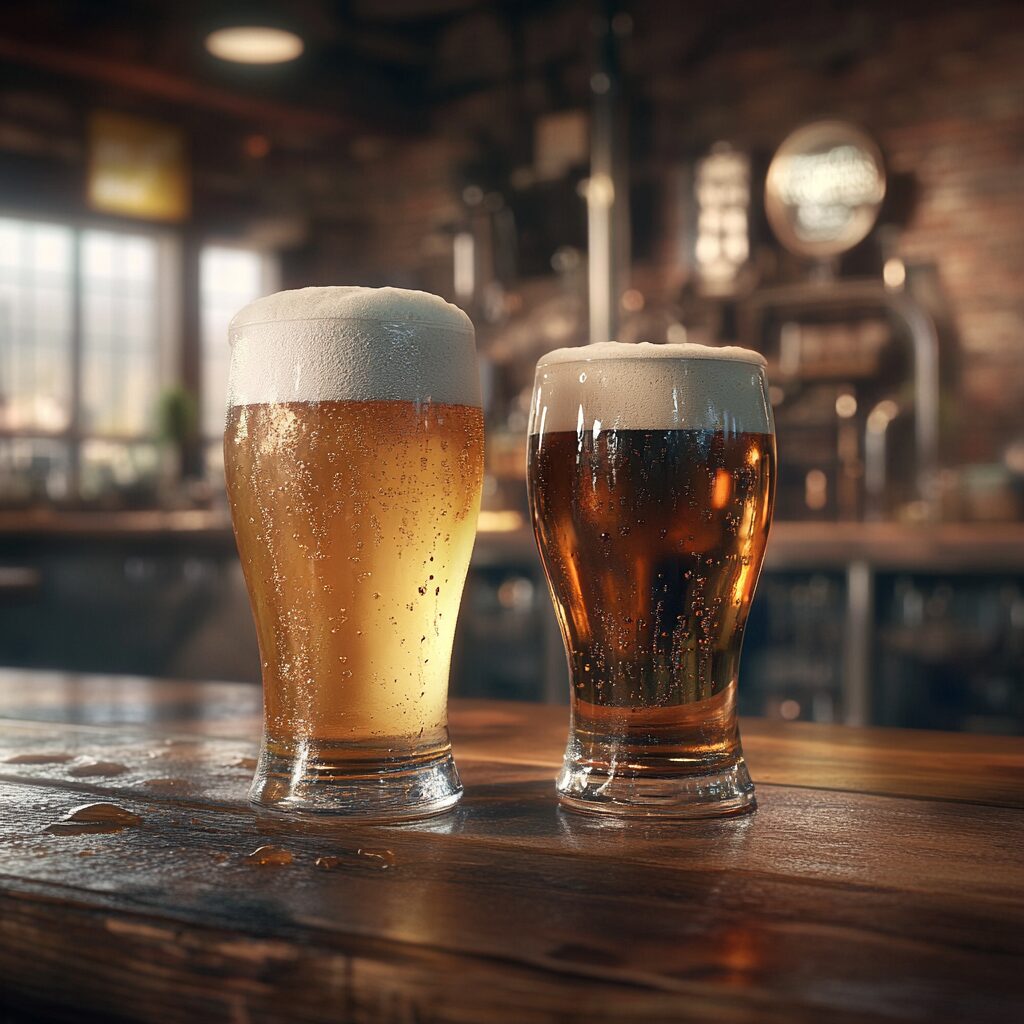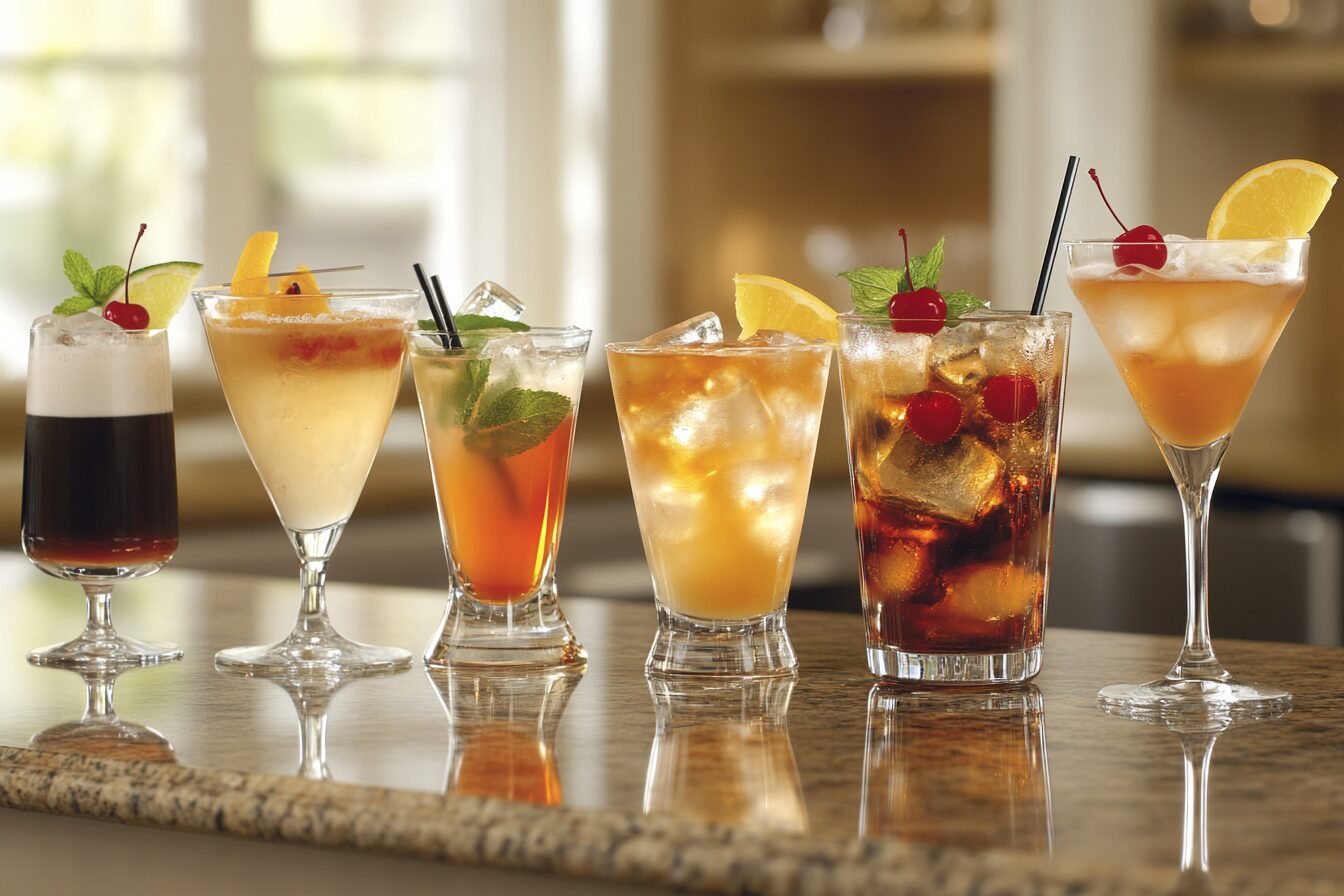Hosting a Wine Tasting Party
Setting up a wine tasting at your pad? It’s a blast, trust me! Not only do you get to sip and savor vino, but swapping tales and giggles with pals is the real treat. Here’s how to nail your gathering like a pro.
Essential Glassware and Brands
Let’s talk glass. You don’t just want any ol’ cups; grab some proper wine glasses. Totally worth the investment because they amp up the whole tasting shindig by making the wines smell, feel, and taste their best. I swear by Riedel, Zalto, and Schott Zwiesel—fave picks of the grape gurus out there (Food & Wine).
Here’s a cheat sheet for picking the top glasses for any wine you pour:
| Wine Type | Recommended Glass |
|---|---|
| Red Wine | Bordeaux or Burgundy |
| White Wine | All-purpose or Chablis |
| Sparkling Wine | Flute or Tulip |
| Rosé | In-between glass |
Selecting Wines for the Party
When it comes to wine, I like to be the chief wine officer. Keeps the vibe consistent and everyone’s taste buds happy. Five to seven wines is the sweet spot for a smaller crew. Ever run out of wine? Yeah, me neither! One bottle usually covers five to six pals pouring with precision (Food & Wine).
Here’s a nifty table showing how much vino you’ll need:
| Number of Guests | Bottles of Wine Needed |
|---|---|
| 5 | 1 |
| 10 | 2 |
| 15 | 3 |
| 20 | 4 |
Pairing Wines with Food
Seriously, don’t forget the munchies. Pairing bites with wine is the secret sauce to a killer tasting session. My go-tos? A fabulous spread of nibbles like cheese, charcuterie, or even fancy finger food. It’s not just grub—think of it as taste party time (Delfino Fine Wines).
Here’s a quick list of what pairs well with each wine type:
| Wine Type | Food Pairing Suggestions |
|---|---|
| Red Wine | Grilled meats, rich cheeses |
| White Wine | Seafood, salads, light pasta dishes |
| Sparkling Wine | Fried foods, light cheeses, fruits |
| Rosé | Charcuterie boards, grilled vegetables |
Matching your snacks with the sip creates a warm, welcoming vibe. It’s more than just a party; it turns into an epicurean adventure, with chats and taste testing to boot! For more tips and tricks, check out my guides on pairing food and wine or get picky with wine and cheese pairing and wine partnering with steak. Cheers!
Engaging Your Guests
When I throw a wine-tasting party, I want my friends to feel more than just welcome—I want them to dive into an experience worth savoring. Here’s my secret recipe for making everyone feel connected and having a blast.
Storytelling Approach
Forget the snooze-fest lectures; I’m all about bringing each wine to life with a story. Every 15 to 20 minutes, a new bottle takes center stage. It’s like introducing an old friend: where it comes from, the folks behind it, and its unique culture. These tales create a buzz, sparking conversations that go beyond just the wine (Food & Wine). It’s more fun, and folks actually learn a thing or two in the process.
Creating the Right Atmosphere
The mood of the room can make or break the evening. I set the vibe with gentle lighting and comfy spots to chill, tossing in some decor that nods to the wine’s origin. Soft tunes play in the background, setting up the perfect vibe. And nothing says “make yourself at home” like inviting guests to bring their own charm and style to the party.
I also mess around with different glass shapes to explore how they change the feel and flavor of wines. You’d be surprised how a map or a picture of the vineyard can connect sips to the stories and places they came from, turning them into part of a bigger adventure.
Interactive Wine Tasting Elements
To keep things lively, I’ve got a few tricks up my sleeve. A blind tasting is always a hit—getting everyone to guess the wine type adds a dash of competition. Another favorite is the aroma challenge. Guests sniff out scents in each pour, which gets everyone talking and laughing as they learn (Delfino Fine Wines).
And what’s a night without a little trivia? I mix in some wine-themed questions to get the brain cells fired up while sipping. It adds a playful twist and keeps the chatter going long through the evening.
By weaving together stories, setting the right scene, and adding some playful challenges, I aim to create a memorable wine tasting that resonates with everyone there. The thing is to engage every sense in the room. If you want more tricks of the trade, swing by our wine tasting tips.
Making it Memorable
Throwing a home wine bash that sticks in people’s minds is kinda like the secret sauce to making everyone feel like a superstar. I got a few tricks up my sleeve to jazz up the whole shebang, like handing out cool mementos and sending guests home with some nifty swag.
Providing Keepsakes
Everyone loves a little something to take home, right? Personalized keepsakes are a fun way to keep the memories flowing. Picture everyone with their own unique wine glass charm, a quirky reminder of their favorite sip. I’m also thinking some handy wine tasting notes could hit the spot. They help keep those taste buds recollecting the evening’s delights well after the last sip.
Engraved pens for jotting down thoughts during the tasting? Fancy, right? It adds class to the experience and doubles as a cherished takeaway. These tiny gestures have their own magic, pulling folks into the tasting fun (Make Mine a Spritzer). And for more food and wine combo ideas that’ll tickle your taste buds, give our food and wine pairing guide a look-see.
| Keepsake Ideas | Why They’re a Hit |
|---|---|
| Personalized Wine Glass Charms | Special little charm they won’t forget. |
| Tasting Notes | Handy reminders of the wines they loved. |
| Engraved Pens | Stylish for notetaking, sweet as a gift. |
Sending Guests Home with Gifts
Gifts? Oh yeah, they bring an extra sprinkle of joy. Pairing bits of happiness, like bottle stoppers, quirky corkscrews, or even a pouch of chocolaty goodness that marries well with the night’s wines, can hit the sweet spot.
And let’s not stop there—a tiny gift bag tying it all together? Now we’re talking. A cute bundle with a combo of these treats gives your mates a bit more than your average goody bag—it’s a memory-maker kit! Toss in a list of wine pairing suggestions to get their wheels turning for their own tastings down the line.
By sprinkling the magic with keepsakes and gifts, I bet my wine shindig at home will be a standout for each guest, sparking connections and creating memories they’ll cherish for ages.
The Art of Wine Tasting
Tasting wine at home ain’t just fun – it’s a tasty ticket to explore new flavors and up my wine game. To get the most out of it, I’ve got to pay close attention and know how to give each glass its fair due.
Enhancing Your Palate
Want to boost your taste buds? Swirling the wine glass is where it’s at. Sure, it looks fancy, but it gets the wine’s aromas up and dancing, leading to a richer sip. Good practice? Keep the pour light – around five ounces is just right to let those smells do their thing. Tasting wines together is a real eye-opener too, allowing me to spot differences in where the wines come from and how they’re made. I’ve learned, for instance, that a Cab from California’s got its own groove compared to one from Washington.
| Tasting Tip | Description |
|---|---|
| Swirl for Aromas | Releases more aromas and jazzes up the tasting. |
| Side-by-Side Tasting | Sheds light on regional and style differences. |
| Standard Size | Five ounces is just right for a sample sip. |
Engaging All Your Senses
Wine isn’t just for sipping – it’s for the senses. I pay attention not just to the taste, but to its other qualities, too. Sweetness, acidity, and tannins tell the story of a wine’s personality. As I sip, I think about how those tastes stick around – do they match with the smell, or is there a surprise twist at the end? The finish could be smooth, a bit sharp, or fruity. Each wine teaches me something new.
Elements to Consider During Tasting
When diving in, there are a few things I always keep an eye – or rather, a tongue – on. The mix of fruit, tannins, and acidity is the trifecta that makes or breaks a good wine. Complexity matters too; does the flavor stick around and evolve, or is it a one-note wonder? These questions help me feel out each glass, deciding if it’s one I’d be happy to pair up with dinner or just enjoy on its own.
| Wine Elements | Importance |
|---|---|
| Sweetness | Shapes how the wine hits the taste buds overall. |
| Acidity | Offers a zesty vibe, balancing out sweetness. |
| Tannins | Adds to its backbone and means it might age well. |
| Finish | Stays with you, changing how much you’ll enjoy it. |
Exploring wine is all about taking the time to use all the senses I got and understanding these essential parts. Every time I taste, it’s a chance to add to my list of favorites and grow my love for what makes each wine unique. For more wisdom, check out the goods on our wine tasting tips. Cheers!
Structured Wine Tasting
Who knew sipping wine could be such an art form? I’ve found that a little structure goes a long way in really soaking up the magic each bottle offers. I follow a simple plan to make sure I’m getting the most out of each glass.
Systematic Approach
My wine tasting starts with a few easy steps to get right to the heart of each bottle:
- Visual Check: First, I take a good look at the wine—its color, clarity, and concentration. If it’s darker, it might pack some serious flavor or age.
- Sniff Test: A gentle swirl sends those aromas dancing out of the glass. I take a moment (or two) to really breathe it in, trying to pick out scents that might range from fresh fruits to delightful flowers.
- Tasting: Here’s where the fun really begins. A small sip lets me savor the first flavors, and then I see how they change as the wine washes over my taste buds.
- Finish Line: Even after swallowing, I focus on the aftertaste and how long those flavors hang around.
By following these steps, I can guess where the wine hails from, its style, and just how good it really is.
Notable Structural Elements
Each wine’s got a set of traits I always look for: sweetness, acidity, tannins, alcohol, and body. These give every bottle its unique personality.
| Structural Element | What It Means |
|---|---|
| Sweetness | From dry to sugary, it shapes the flavor experience. |
| Acidity | Adds zing; more acidity can make wine seem crisp. |
| Tannins | Mostly in reds; gives that puckery feel and backbone. |
| Alcohol Content | Can make the wine feel heavier, sweet, or round. |
| Body | Describes how it feels in the mouth—light, medium, or like a feast. |
Knowing these helps me put my thoughts into words and cranks up my enjoyment.
Evaluating Flavors and Finish
With each sip, I pay attention to the flavors and how they shift or stick around. Do they match the smells? Do they change over time? A wine might kick off with fresh fruitiness before diving into deeper, richer flavors.
Once I’ve swallowed, I focus on the finish—whether it leaves a fruity farewell or something a bit more understated. It might be zesty or leave a lingering hint of bitterness. Picking up on these details helps me figure out how the wine might fit at the dinner table. When I need some inspiration, I grab my trusty food and wine pairing guide.
By sticking to this plan, I get a true taste of each wine’s story and complexity. It’s a tasty adventure, and every glass brings a new surprise to enjoy!
Food Pairings at a Wine Tasting
Enjoying a glass (or two) of wine really comes alive with just the right munchies. When thoughtfully combined, the flavors of both the wine and the food can reach new heights. So, let me share how I handle pairing, course order, and keeping an eye on any dietary needs.
Pairing Strategies
When I’m matching wine with food, I lean on the bedrock ideas of flavor: harmony, opposites, and matching origins. Below are a few smart moves I often use:
| Strategy | What’s It About |
|---|---|
| Complementary Pairing | Think of putting similar flavors together. A creamy Chardonnay, for instance, loves cozying up to alfredo pasta. |
| Contrasting Pairing | Go for balance by mixing differing tastes. A sweet sip like Riesling pairs well against the heat of spicy Asian dishes. |
| Regional Pairing | Serve up wines with foods from their birthplace. Italian wines shine with pasta; Spanish picks are friends with tapas. |
For more inspo on pairings, check out our food and wine pairing guide.
Order of Food Courses
The sequence in which I serve food isn’t just by happenstance—it’s a crafty plan to help everyone love each sip and nibble. Here’s my go-to lineup:
- Light Appetizers – Kick things off with airy whites or bubbling wines along with cheese or seafood snacks.
- Heavy Appetizers – Shift to stronger whites or gentle reds with bites like bruschetta or olives.
- Main Dishes – Lay out hearty reds alongside heavy hitters like steak or lamb. Full-bodied reds like Cabernet Sauvignon share a special magic with steak.
- Dessert – Cap it off with sweet wines and sugary goodies. Something like a Sauternes can cozy up perfectly with a luscious chocolate cake.
It’s about dancing through the meal with wines that match the dish weights—save those big, bold flavors for the back end of your tasting fun.
Considering Dietary Concerns
I totally get that special dietary needs can pop up during wine tastings. I always do a quick check-in with guests to suss out any allergies or leanings toward veggie, gluten-free, or other preferences (Fun Couples Guide).
I like having Plan B at hand for each course. If something’s got gluten, I’ll dish out a gluten-free twin. Tweaking recipes or tossing in diverse options can bring everyone together under one cozy tasting roof.
Using these taste tricks, keeping the courses in the right groove, and catering to dietary quirks—my wine tastings become an everybody-friendly, unforgettable bash. For more tips to nail your own tasting, peek at our wine tasting tips.
Affiliate Disclosure: This post may contain affiliate links. If you click and purchase through one of these links, we may receive a small commission at no extra cost to you. Thank you for your support!




